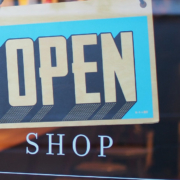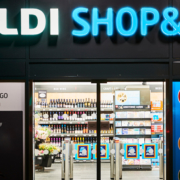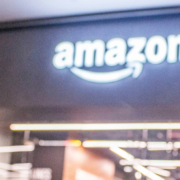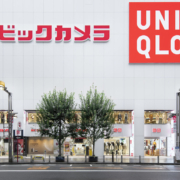Why Are There Not More Cashierless Stores? What Are the Limiting Factors?
You’re done shopping and want to check out. Now you must wait your turn in a long line to complete payment. Every shopper can understand this experience.
The emergence of cashierless stores has redefined how people shop. The idea of a cashierless store is to accelerate the shopping experience and reduce the number of time shoppers spend in lines. What if you could just walk into a store, shop for your items, and literally walk out?
This is what cashierless stores are about. So, why are there not more cashierless stores? What are the limiting factors? This article will dive deep into retail and brick-and-mortar stores to discuss this recent invention and its challenges.
Why Are There Not More Cashierless Stores? What Are the Limiting Factors?
Cashierless technology allows people to walk into shops and complete their purchases without interacting with cashiers. Amazon launched this idea in 2016 and practiced it in-house before opening it to the public in 2018.
The Amazon store provides shoppers with the Go app through which they interact with the store and make payments accordingly. Each shopper scans the app to shop in the store. The stores are designed with cameras and sensors that track customers and their items as they shop.
The app automatically processes payments when you complete your shopping and walk out. As you can imagine, this optimizes customer shopping and makes payments seamless. Essentially, you save time and get value for money. Since Amazon launched the Amazon Go store, it has helped the company stay ahead of the competition and improve customer experience.
But this invention relies on certain factors that ensure its success. Let’s examine some of the crucial elements behind cashierless stores.
A Dedicated App
When you hear that a cashierless store is where you can enter to shop and just walk out, you may think, “What if someone enters and runs away without paying?” This is far from how cashierless stores work. A crucial component of entering these stores is a smartphone.
When you get to the store, you’ll be required to scan a QR code to authenticate your entry. Successfully scanning the code validates your entry and grants you access. You’ll also need the app for the billing process when checking out.
Additionally, the app tracks customer behavior and records necessary data to improve the shopping experience. By leveraging this data, it becomes convenient to make suitable recommendations for improving the digital experience.
Sensor Fusion
Another crucial component of the cashierless store is sensor fusion. This comprises cameras and sensors positioned to track items chosen by shoppers and those returned to the shelf. The cameras monitor each customer’s movements while the sensors track the items that go into the cart.
The stores are designed with many cameras to cover every single move a customer could make. The images captured are sent back to the central computer for recording and identification purposes. Essentially, these cameras monitor every customer irrespective of where they are.
If a customer selects an item and returns the same item, the virtual cart will update accordingly. The stores also have weight sensors that track the weight of carts, so someone can’t attempt to pick up two items in the hopes that they’ll only get billed for one. The weight sensors will detect the number of items in the cart.
Some Cashierless Store Models
Aside from Amazon Go, other cashierless stores operate similarly. The unique proposition of all these stores is to eliminate checkout lines and help customers save valuable time.
Zippin is one of the places leveraging artificial intelligence (AI) technology and a combination of cameras to allow customers to walk in and shop seamlessly. The technology allows the store to bill customers through their credit card and a pre-generated QR code using a sensor.
Grabingo has also launched an app for large stores to track customer purchases. The technology uses tiny cameras positioned across different places in the stores.
Caper and Imagr also operate smart shopping carts that enable customers to scan their products as they put them inside their carts. This helps to total their purchases and improve their shopping experience.
Another example is Mashgin, which uses countertop devices to improve customer experience. Once you input your desired purchases, cameras, computer vision, and weight sensors will generate a bill based on those purchases. This offers a distinct shopping experience from cashierless stores.
Challenges Facing Cashierless Stores
Although cashierless stores appear like the present and next best thing, they are not growing as much as you might expect. Some have even said the stores are still in their experimentation phase.
The fact is that many factors affect the growth of cashierless stores. While they may seem like a good idea, numerous realistic factors present challenges. Let’s examine some of them.
Any organization looking to invest in cashierless stores must prepare to spend money on many different resources. Putting together a store that functions with almost no human interaction and assistance can be difficult.
Choosing a Responsive POS App
The success of a cashierless store is connected to the responsiveness of its app. You must make sure to use a highly responsive app for your customers. No one wants to spend minutes processing payments or filling their virtual carts.
If it takes too long to make payments or scan QR codes, your cashierless store might face the same problem it intends to solve. You must invest in building a friendly app that improves customer experience.
Computer Vision, Cameras, and Sensors
Another round of investment goes into fitting cameras and sensors into your store. These crucial components help track customers and ensure no move goes unrecorded. This ensures adequate tracking, eliminates theft and serves record-keeping purposes.
You’ll also need deep learning technology to monitor customer behavior and improve their experience accordingly.
Aside from these, you’ll need biometric installation, unlimited inventory, and manual staffing. Essentially, all these can culminate in millions of dollars of investment. Although cashierless stores can provide great returns, as in the case of Jeff Bezos, there’s no guarantee that your investment will drive notable returns.
Additionally, since it’s a new area, many people are skeptical about venturing into this business. The technology behind existing cashierless stores, such as Amazon Go and Dash Carts, has undergone various iteration phases.
Ultimately, the technology is expensive and complicated, with numerous layers. All of this affects the number of cashierless stores.
The Pandemic Has Subsided
One factor that caused cashierless shopping to grow was the Covid-19 pandemic. Although cashierless stores have been around before 2020, the pandemic made people see why cashierless stores are beneficial.
After all, if everyone can shop and process payments automatically, they don’t have to wait in lines, making social distancing more practical. Experts have even commented on how the Covid-19 crisis helped Amazon grow its Go cashierless store.
Since the Covid-19 crisis has subsided, people are shopping in person again. This has likely impeded the acceleration of cashierless stores. Investors may have reconsidered the profitability of this venture if they feel people no longer have a pressing need for cashierless stores.
Do Most People Want Fully Automated Stores?
Cashierless stores save time and make the shopping experience smooth, but they simultaneously eliminate the need for human interaction when shopping. Not every shopper wants a fully automated shopping experience.
In fact, some people desire human interaction during their shopping process. This can be a store clerk assisting with purchases or a store attendant offering helpful assistance.
Additionally, the majority of older people aren’t familiar with this technology. They have always shopped at grocery stores the conventional way, and some of them love it. People in this category may consider it a turn-off to interact with robots and sensors while shopping.
Business owners must consider their target market before joining the cashierless trend. It’s also crucial to note that these owners will do a cost analysis of how much it takes to fully transition into cashierless stores.
Giant brands like Amazon had to spend two years developing the idea before opening these stores to the public. Considering this, one can see why cashierless stores aren’t growing at a higher rate.
What to Do With Manual Staff?
Automating the shopping process means most stores have to let go of their manual staff. Many stores don’t have the luxury to make such decisions. After evaluating the cost comparisons between continuing operations as is or expanding into cashierless stores, most stores likely can’t afford the new invention.
When Amazon revealed its plan to open 3,000 cashierless physical stores, experts estimated the total cost to be between $0.5 billion and $3 billion. This may be a drop in the ocean for a company like Amazon, capturing 49% market share. But many other brands don’t have this amount to spend on the cashierless trend.
For most stores, it’s perhaps more cost-effective to continue operations with manual staff than to venture into cashierless stores. Experts estimate that Amazon may take three years to break even with its cashierless stores. Other small companies may take even longer.
You Still Need People
Before a store contemplates digital transformation into a cashierless store, they’ll evaluate the nature of the products they sell. Not all businesses can seamlessly automate their operations or go cashierless.
Some businesses will always require human assistance and services to operate effectively. It will take longer for these businesses to evaluate going automated with their operations.
Are Cashierless Stores the Future?
Cashierless stores solve a significant problem in the retail industry. People have complained for years about standing in lines to complete payments. Given this consideration, the cashierless trend may attract more investment as society progresses. In fact, some argue that cashierless stores are the present and not the future.
Nevertheless, it’s crucial to consider the practical aspects of going cashierless. Although it has numerous merits for customers, certain factors limit its adoption, one of which is the complicated and expensive technology.
Additionally, given the required iteration phases that the technology undergoes, it may take some time before the number of cashierless stores grows significantly.
But evidently, AI has a place in the retail industry. Amazon has proved that this can work. Additionally, the AI behind cashierless technology is self-correcting. This means that the technology improves itself by learning customer behavior to determine what to optimize for a better shopping experience.
The Bottom Line
So, why are there not more cashierless stores? What are the limiting factors? Cashierless stores, like self-driving cars, are technological innovations designed to take customer experience to the next level. Although there are debates about their widespread adoption and whether it would happen, these inventions remain remarkable in their respective industries.
Providing the retail industry with a way to eliminate lines and save time makes the cashierless trend a pacesetter. Considering the success of Amazon’s Go store, among others, there’s a possibility of increased adoption of cashierless stores in the near future.
Frequently Asked Questions
How does a cashierless store work?
Cashierless stores work by operating with sensors, cameras, and computer vision. These components track every customer’s movement, scan their smartphone, and automatically charge them for what they purchase.
Is Amazon Go cashierless?
Amazon Go is a cashierless store designed to provide customers with a “walk in and shop” experience. The store was initially kickstarted in-house in 2016 and publicly launched in 2018. It has redefined customer experience in the retail industry and proved that cashierless stores are possible.




 Aldi
Aldi 

